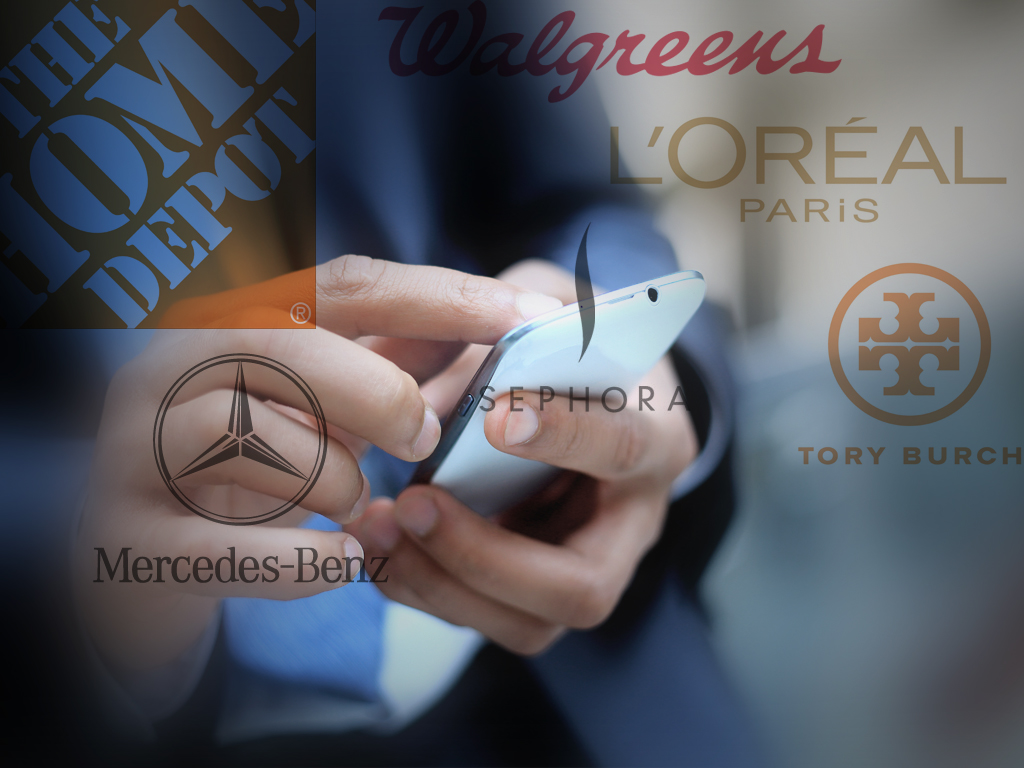Mobile-assisted in-store shopping is on the rise, as evidenced by recent efforts from brands like Target, Walmart, Macy’s and Lowe’s. These initiatives include maps and enhanced search functionality, which, in turn, help consumers find what they want as quickly as possible. And, at the end of the day, this could also help brands cut through some of the noise this holiday season and increase sales.
Mobile shopper engagement company Point Inside announced several new in-store navigation features in the app for retailer Target including interactive maps, as well as “enhanced” shopping lists and search capabilities. Further, Target will be using the interactive maps to provide the precise locations of its doorbuster Black Friday deals for each of its 1800 U.S. locations.
Target is using Point Inside’s Storemode platform, which helps retailers better engage with customers in stores, according to Pete Coleman, executive vice president and general manager at Point Inside. For example, the interactive maps overlay item locations as pins on store maps – including inventory availability in real-time, Coleman said.
Part of the work that goes into the interactive maps is getting the physical context of each store – which Point Inside refers to as “ground truth” – and this helps answer the two most important questions for consumers: “Do you have it and where can I find it?” Coleman said.
“Each store is like a snowflake and has its own unique nuances,” he added.
In addition, shopping lists provide a product’s aisle location in a given store and link directly to the interactive maps, and type-ahead, auto-complete functionality enables guests to quickly add items to their shopping lists.
The shopping list feature mimics consumer behavior when creating lists because consumers write down generic items rather than specific brand names when they are compiling handwritten shopping lists, according to Coleman. That means retailers can provide maps/lists without forcing consumers to “browse down through a tree to identify a specific product,” Coleman said. “We’ve seen shoppers not have the patience to do that.”
These features launched with Target’s iPhone app, but will be available for Android “very soon,” Coleman said.
Point Inside sees mobile as an opportunity to really go inside the store and assist with closing sales within the store and inspiring shoppers “where over 90 percent of sales are happening today still in 2014,” Coleman said.
In turn, retailers gain knowledge about shopper behavior and what’s trending in each store, which can help in merchandizing and fulfillment, Coleman said.
“I think broadly about the industry, every retailer is excited about this technology because shoppers have already kind of voted. The jury’s in – they are using devices in store,” Coleman said. “This technology answers those two questions [Do you have it and where can I find it?].”
In addition, when it comes to in-store search, Coleman said apps have historically yielded results from a retailer’s ecommerce system, which includes everything they have in their warehouses.
“But [the customer] took the time to drive to the store. They are there and ready to buy, so our philosophy and what you see is store-specific search…which makes the universe of results come from what’s in that store that day,” Coleman said.
In addition to Target, Coleman said Point Inside is working with home improvement chain Lowe’s, as well as supermarket chain Meijer, along with about a dozen other brands.
While Lowe’s has utilized Point Inside technology for about a year, it recently upped the in-store ante with “autonomous retail service robots” in a California location to “study how robotics technology can benefit customers and employees.”
Like Target’s maps and lists, the robots, called OSHbots, will “assist customers to quickly navigate stores by directing them to specific products and providing real-time information about product promotions and inventory,” according to a press release, adding that OSHbot will eventually be able to communicate with customers in multiple languages and remotely connect with employees at other stores to answer questions.
“Using science-fiction prototyping, we explored solutions to improve customer experiences by helping customers quickly find the products and information they came in looking for,” said Kyle Nel, executive director of Lowe’s Innovation Labs, in a statement.
Walmart, too, added a “Search My Store” feature to its app earlier this year. Search My Store allows customers to search a particular Walmart store for “nearly any item” and will help customers find the items they need more quickly and make shopping at Walmart “easier, faster and more accessible,” according to a Walmart blog post by Vice President of Mobile and Digital Strategy Wendy Bergh.
“Think of it as a personal shopping associate for your local Walmart, always with you whenever you need it,” Bergh wrote.
Urban Outfitters was also reportedly installing beacons in select stores in order to send messages to shoppers with the Urban Outfitters app when they enter the store and go into fitting rooms.
Further, according to Ad Age, Macy’s teamed up with Google to allow consumers to search for items on their phones to see what is in stock near them. The product information will include details like price, size, and color, as well as directions to the store by utilizing Google’s proximity marketing platform.
This video from Google+ Your Business explains more about the Macy’s effort, as well as a case study from Think with Google, which says consumers are visiting stores less during holiday visits but are “better informed about what they [want] when entering the store” so “each trip [is] more purposeful.”
https://www.youtube.com/watch?v=L62N0XOsmgUFurther, according to Think with Google’s Digital Impact On In-Store Shopping study, brands are offering strategies like in-store pickup for items bought online, home delivery of products purchased in-store and product availability at nearby stores in search results, which yield better experiences for shoppers and boost the bottom line.
The Think with Google case study cites Macy’s vice president of marketing strategy, Serena Potter, who says the retailer makes sure its local store inventory is visible to consumers browsing its website or Google Search via Google Local Inventory Ads, which connect shoppers with information about the products they seek.
“We can tell her that there are eight of what she wants in her size and desired color available right now in the store that’s five blocks away,” Potter said.
What’s more, earlier this year, in-store mobile marketing platform aisle411 announced functionality that will allow shoppers using Google’s Project Tango, which, per a release, is a technology used for creating 3D maps of indoor spaces with the ability to show a user’s precise location and orientation, to search for and navigate to product locations.
Per the release, the combined product allows users to find specific products in a 3D augmented reality experience inside the store.
Aisle411 users can also discover personalized coupons, offers and rewards that pop out of the shelf along their in-store route, as well as collect loyalty rewards for walking down aisles. Aisle411 did not respond to a request for comment. However, per this video, Aisle411 is working with brands like drug store chain Walgreens.
Mall mapping efforts arent entirely new. Search engine Bing has had mobile maps for malls since at least 2011. Google Maps, too, has offered mall maps.
What do you think of these mobile mapping and in-store search efforts so far? Will they be effective in attracting holiday shoppers?


